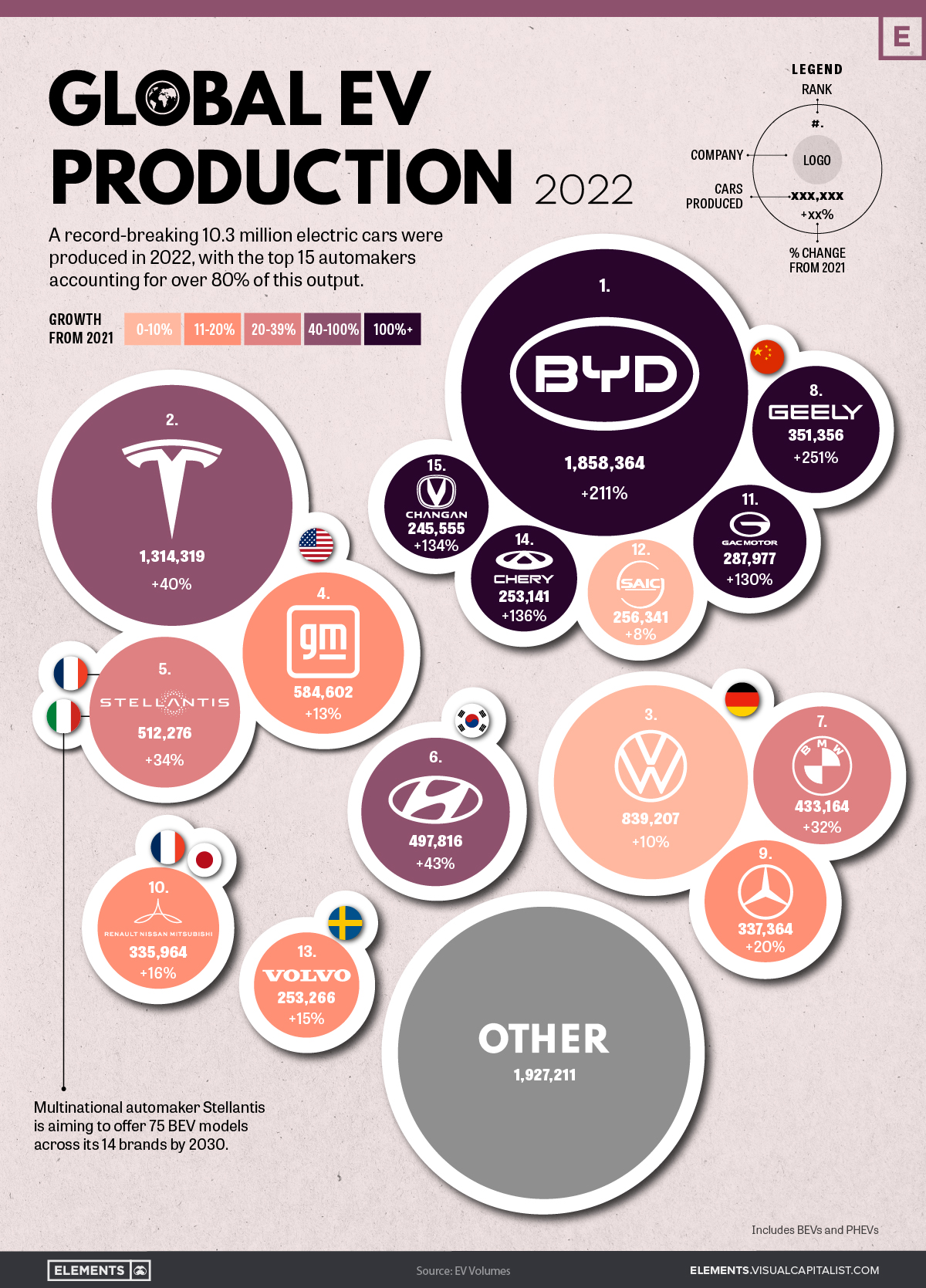The China Market: Navigating The Complexities For Automakers Like BMW And Porsche

Table of Contents
Understanding the Chinese Automotive Consumer
The Chinese automotive market is no longer a homogenous entity. It's segmented by age, income, location, and rapidly evolving tastes. Successfully entering this market requires a deep understanding of these diverse consumer segments.
Shifting Demographics and Preferences
- Growing preference for SUVs and electric vehicles (EVs): SUVs have become incredibly popular, representing a significant portion of sales, while the government's push towards electrification is driving rapid growth in the EV sector. Automakers must offer compelling options in both categories to compete effectively.
- Emphasis on technology and advanced features: Chinese consumers, particularly younger buyers, highly value advanced technological features such as sophisticated infotainment systems, driver-assistance technologies (ADAS), and connected car capabilities. These features are crucial selling points.
- Increased demand for luxury brands, but also a focus on value: While luxury brands like BMW and Porsche enjoy strong demand, price sensitivity remains a factor. Consumers expect high quality and prestige but also seek value for their investment. A balance between luxury and affordability is key.
- The rise of the younger, digitally native consumer: This demographic is highly influential, relying heavily on online reviews, social media, and digital marketing for information and purchase decisions. Reaching this group requires a strong digital marketing strategy.
Regional Variations
Consumer preferences and buying habits vary significantly across China's diverse regions.
- Tier 1 cities (Beijing, Shanghai, etc.) vs. Tier 2 and 3 cities: Tier 1 cities boast higher purchasing power and a greater preference for premium brands and advanced features. Tier 2 and 3 cities present different needs and preferences, requiring tailored marketing approaches.
- Differences in brand perception and purchasing power: Brand perception can differ widely across regions. What resonates in a coastal metropolis might not in a more rural area. Pricing strategies must reflect these variations in purchasing power.
- Localized marketing strategies are crucial: A one-size-fits-all approach won't work. Marketing campaigns must be tailored to the specific needs and preferences of each region, considering cultural nuances and local communication styles.
Navigating the Regulatory Landscape
The regulatory environment in China is dynamic and complex, demanding careful navigation by international automakers.
Import Tariffs and Taxes
Understanding and mitigating the impact of import duties and taxes is crucial for profitability.
- Impact on pricing strategies: High import tariffs can significantly impact pricing, making it challenging to compete with locally manufactured vehicles.
- Potential for local manufacturing to reduce costs: Establishing local manufacturing facilities can significantly reduce costs associated with import tariffs and taxes, enhancing competitiveness.
- Staying updated on changing regulations: The regulatory landscape is constantly evolving. Automakers need to maintain close monitoring and adapt their strategies accordingly.
Environmental Regulations and Emission Standards
China is a global leader in pushing for stricter environmental regulations, significantly impacting vehicle development and sales.
- The importance of EV adoption and hybrid technology: Government incentives and stricter emission standards are driving rapid adoption of EVs and hybrid vehicles. Investment in these technologies is essential for market access and success.
- Compliance with stringent emission standards: Meeting China's rigorous emission standards is non-negotiable. Failure to comply can result in significant penalties and market exclusion.
- Investing in sustainable manufacturing practices: Beyond vehicle emissions, sustainable manufacturing practices are gaining importance, reflecting a growing consumer focus on environmental responsibility.
Government Policies and Subsidies
Government policies and incentives play a significant role in shaping market dynamics.
- Understanding government support for EVs and new energy vehicles (NEVs): The Chinese government offers various subsidies and incentives for NEV adoption, creating opportunities for automakers investing in this sector.
- Navigating licensing and approval processes: Navigating the licensing and approval processes for new vehicles and technologies can be complex, demanding a thorough understanding of regulations and procedures.
- Staying informed about policy changes and their implications: Regular monitoring of policy changes and their potential implications is crucial for proactive adaptation and maintaining competitiveness.
Competition and Market Strategies
The Chinese automotive market is intensely competitive, demanding shrewd strategies for success.
Intense Domestic Competition
The market is crowded with both established domestic and international players.
- Strategies for differentiating brands and products: Finding unique selling propositions (USPs) is crucial to stand out from the competition. This could involve focusing on specific niche markets or highlighting unique technological features.
- Building strong brand loyalty and recognition: Building strong brand awareness and customer loyalty through consistent marketing and excellent customer service is essential for sustained success.
- Adapting to local market trends: Continuous monitoring of market trends and consumer preferences is essential for timely adaptation and maintaining competitiveness.
Building a Strong Local Presence
Establishing a strong local presence is key to market penetration.
- Investing in local partnerships and joint ventures: Collaborating with local partners can provide valuable insights into the market and facilitate smoother navigation of regulatory hurdles.
- Providing excellent customer service tailored to Chinese consumers: Providing outstanding customer service tailored to local preferences and expectations builds trust and loyalty.
- Utilizing effective localized marketing and communication strategies: Marketing campaigns must resonate with the local culture and consumer preferences, employing effective communication channels and strategies.
Conclusion
Successfully navigating the China market requires a profound understanding of its multifaceted complexities. Automakers like BMW and Porsche must adapt to the unique challenges posed by consumer preferences, regulations, and intense competition. By focusing on localized strategies, embracing technological advancements, particularly in EVs, and building strong local partnerships, international brands can unlock the immense potential of this dynamic market. To succeed in this challenging but rewarding environment, a comprehensive understanding of the China market is crucial for long-term growth and profitability. Don't just enter the market – master it. Develop a robust strategy for navigating the China market complexities and reap the rewards.

Featured Posts
-
 Bae Ve Orta Afrika Cumhuriyeti Imzalanan Ticaret Anlasmasinin Oenemi
May 02, 2025
Bae Ve Orta Afrika Cumhuriyeti Imzalanan Ticaret Anlasmasinin Oenemi
May 02, 2025 -
 Justice Department Ends Louisiana School Desegregation Order A New Chapter
May 02, 2025
Justice Department Ends Louisiana School Desegregation Order A New Chapter
May 02, 2025 -
 Kshmyr Ky Hythyt Bhart Ke Lye Mdhakrat Ky Ahmyt Awr Chylnjz
May 02, 2025
Kshmyr Ky Hythyt Bhart Ke Lye Mdhakrat Ky Ahmyt Awr Chylnjz
May 02, 2025 -
 Daisy May Cooper Opens Up About Job Loss Following Theft Confession
May 02, 2025
Daisy May Cooper Opens Up About Job Loss Following Theft Confession
May 02, 2025 -
 Is This Food Worse Than Smoking A Doctors Perspective On Early Mortality
May 02, 2025
Is This Food Worse Than Smoking A Doctors Perspective On Early Mortality
May 02, 2025
